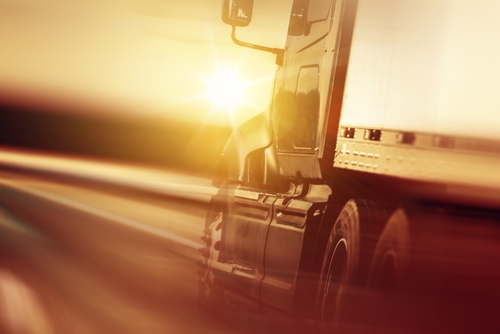The trucking industry is a major polluter, responsible for adding 5.75% of the emissions released into the atmosphere yearly, according to The Guardian. Commercial trucks long escaped the restrictions imposed upon automakers for increasing fuel efficiency and reducing toxic emissions – but those days have come to an end.
The first restrictions upon truck manufacturers were introduced back in 1974, and in 2011, the Obama administration released extensive fuel-efficiency requirements for the largest vehicles. Greener transportation technology promises to bring truck manufacturing into the 21st century, offering new hope for cleaner air – and safety.
New regulations require truck manufacturers to achieve an increase of 23% in fuel efficiency by 2018, and a reduction in CO2 emissions by 20% by year 2017. Truck manufacturers are deeply involved in developing technologies to reduce toxic emissions, and adding advanced safety systems. The driverless big rig could be the answer to both problems.
Driverless trucks are well into the testing stage and can be expected to be a reality within a decade. Other technologies include systems to reduce idling time while drivers rest, heat or cool the vehicle, automated manual transmission that utilize hydraulic pressure to change gears, with a much higher level of fuel efficiency.
In the past, concerns over carbon dioxide emissions made expanding the use of diesel fuel appealing. Recent studies have revealed that this fuel is even dirtier than gas, releasing highly toxic pollutants and cancer-causing substances into the air, including benzene, arsenic and formaldehyde, and others that are proven to be dangerous to human life, and linked with many health problems and diseases.
Trucking accidents have plagued America, and the numbers of innocent people killed or injured every year are shockingly high. These new technologies could allow for much safer roadways, with trucks installed with sensors and alarms to alert drivers of hazards, as well as driverless commercial trucks that will proceed at safe speeds at all times, and have countless high-tech systems in place to keep the truck within lanes, and to make adjustments for weather-related conditions, sudden road hazards, and other issues that a human being could miss.
Along with the environmental impacts of these changes, there’s promise of a comfier ride for the truck drivers. In past years, truckers have gotten their fair share of not-so-great accommodations on their cross-country expeditions and may have developed pain that left them with an inability to work.
With the advent of advanced technologies for the trucking industry, we can not only expect to enjoy safer roadways, but cleaner air and more comfortable accommodations for the driver. All efforts to reduce the amount of toxins released into our air will be of great benefit to future generations.

